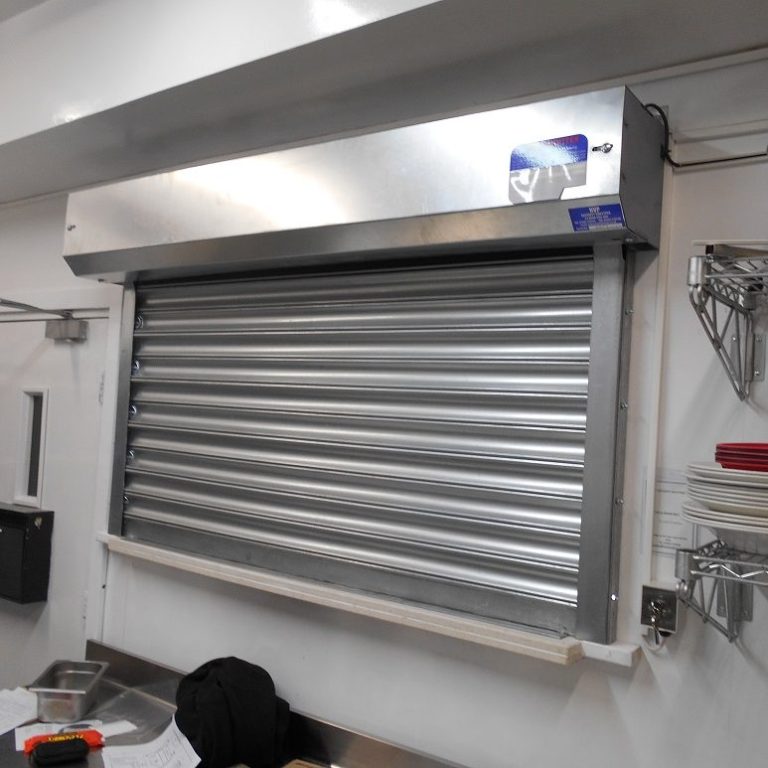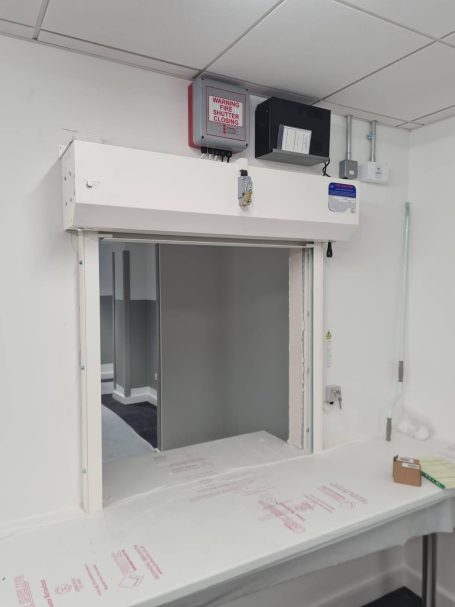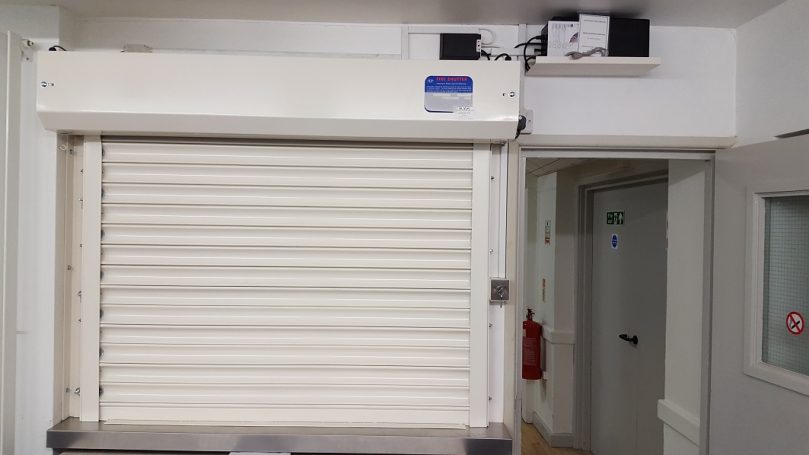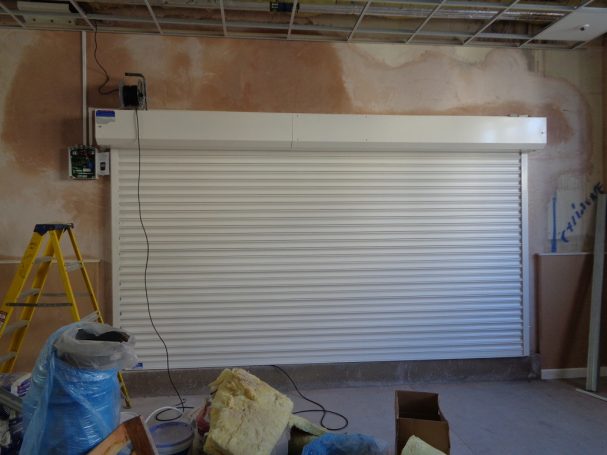info@roller-shutter.uk 01392270218

Protecting Lives & Property: Essential Facts About Fire Shutters for Your Business
In any commercial or industrial setting, fire safety is paramount, and fire-rated roller shutters play an incredibly critical, life-saving role. Far beyond standard security shutters, these specialized barriers are designed to prevent the spread of fire and smoke, protecting occupants and assets alike. This article from HVP Security Shutters delves into the vital world of fire shutters, covering essential UK regulations, common misconceptions, where they are specifically required, and the immense importance of compliance for your business's fire safety strategy.
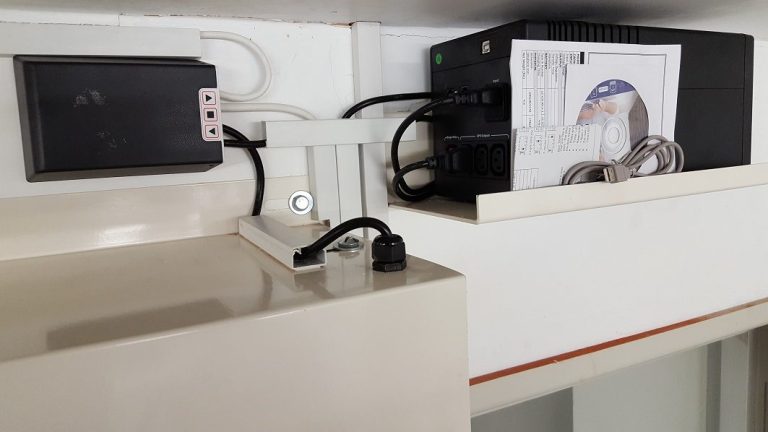
Beyond Basic Protection: The Critical Role of Fire Shutters
A fire-rated roller shutter is a crucial component of a building's passive fire protection system. Its primary function is to maintain fire compartmentation by closing off openings in fire-rated walls and preventing the passage of flames, smoke, and heat between different areas of a building. This allows occupants more time to safely evacuate and limits damage to property.
Unlike standard industrial roller shutters or commercial security shutters, fire shutters are engineered to withstand extreme temperatures for a specified duration, acting as a crucial barrier during a fire incident.
UK Regulations & Standards: Ensuring Compliance
In the UK, the design, installation, and maintenance of fire shutters are strictly governed by Building Regulations and fire safety legislation, primarily the Regulatory Reform (Fire Safety) Order 2005. Compliance is not optional; it's a legal obligation for building owners and managers.
The key standard for fire shutters in the UK is:
- BS EN 16034:2014: Pedestrian door sets, industrial, commercial, garage doors and openable windows - Product standard, performance characteristics - Fire resisting and/or smoke control characteristics.
All fire shutters must carry the CE marking, indicating they meet the essential health and safety requirements of relevant European Directives, including EN 16034. The CE marking for fire shutters specifically confirms their fire resistance and/or smoke control characteristics based on rigorous testing.
It's also important that the installation adheres to BS EN 13241-1, which covers safety in use for all types of industrial, commercial, and garage doors.
Where Are Fire Shutters Required? Common Scenarios
Fire shutters are typically mandated in areas where fire separation is critical to protect escape routes, compartmentalize fire zones, or protect valuable assets. Common locations where they are required include:
- Openings in Fire-Rated Walls: Any opening (e.g., doorways, servery hatches, conveyor openings) in a wall designated as a fire compartment wall must be protected to maintain the wall's fire integrity.
- Separating Different Occupancies: For example, between a retail unit and a residential flat above, or between a factory floor and an office block.
- Protecting Escape Routes: Ensuring that corridors and stairwells remain clear of fire and smoke for safe evacuation.
- Large Buildings & Complexes: Hospitals, schools, shopping centres, large warehouses, and office blocks frequently utilize fire shutters to manage fire risks effectively.
- Kitchen & Servery Hatches: In commercial kitchens, fire-rated servery shutters are common.
- Conveyor Openings: In industrial settings, where conveyors pass through fire compartment walls.
Common Misconceptions About Fire Shutters
There are several misunderstandings about fire-rated roller shutters that can lead to dangerous non-compliance:
- "Any metal shutter will hold back a fire." - False. Only fire shutters specifically tested and certified to BS EN 16034 for fire resistance (e.g., E30, E60, E120, E240 for integrity only, or EW and EI for integrity and insulation) will perform as required. Standard security shutters are not designed for fire containment.
- "Fit and forget." - False. Fire shutters are complex safety devices that require mandatory annual fire shutter maintenance and drop testing to ensure they will deploy correctly in an emergency.
- "They only protect property." - False. While they protect assets, their primary purpose is life safety by preventing the rapid spread of fire and smoke, allowing occupants to evacuate.
- "They need power to close." - Misleading. While they are typically electric, fire shutters are designed with a gravity fail-safe mechanism. This means that in the event of a power failure or activation of the fire alarm, the shutter will automatically descend and close using gravity, ensuring deployment even without electricity. An Uninterrupted Power Supply (UPS) can also be integrated for controlled descent.
The Critical Importance of Compliance, Installation & Maintenance
Achieving and maintaining fire safety compliance is not just a legal necessity but a moral obligation.
- Professional Installation: Fire shutters must be installed by accredited and competent professionals to ensure they form an effective barrier. Incorrect installation can render even a certified product useless in a fire.
- Regular Inspection & Maintenance: The Regulatory Reform (Fire Safety) Order 2005 places a duty on building owners/occupiers to ensure fire safety equipment is maintained. This includes annual fire shutter checks, servicing, and drop testing to confirm the fire shutter deploys correctly. Records of these checks must be kept.
- Integration with Fire Alarm Systems: Fire shutters must be correctly wired into the building's fire alarm system to ensure automatic closure upon detection of fire or smoke.
Choosing the correct fire-rated roller shutter and ensuring its proper installation and maintenance are non-negotiable aspects of responsible building management. They are vital components in protecting lives, minimizing damage, and ensuring your business's continuity.




